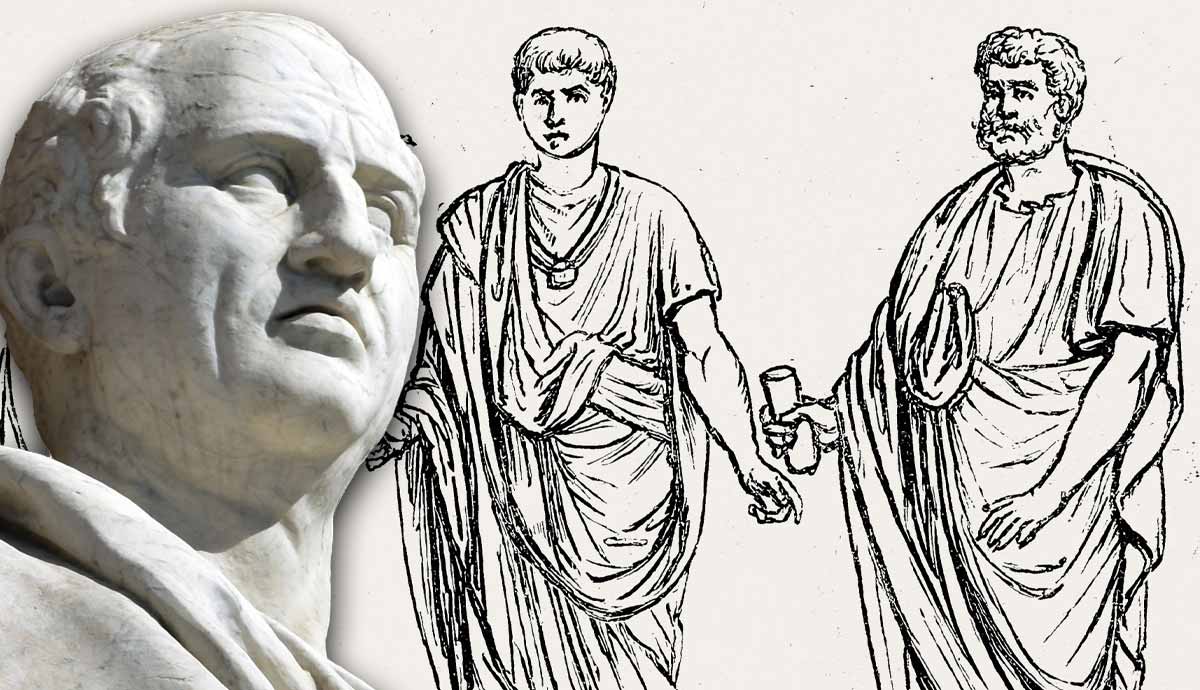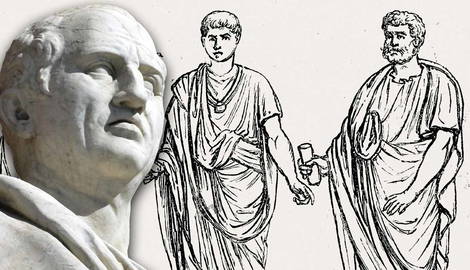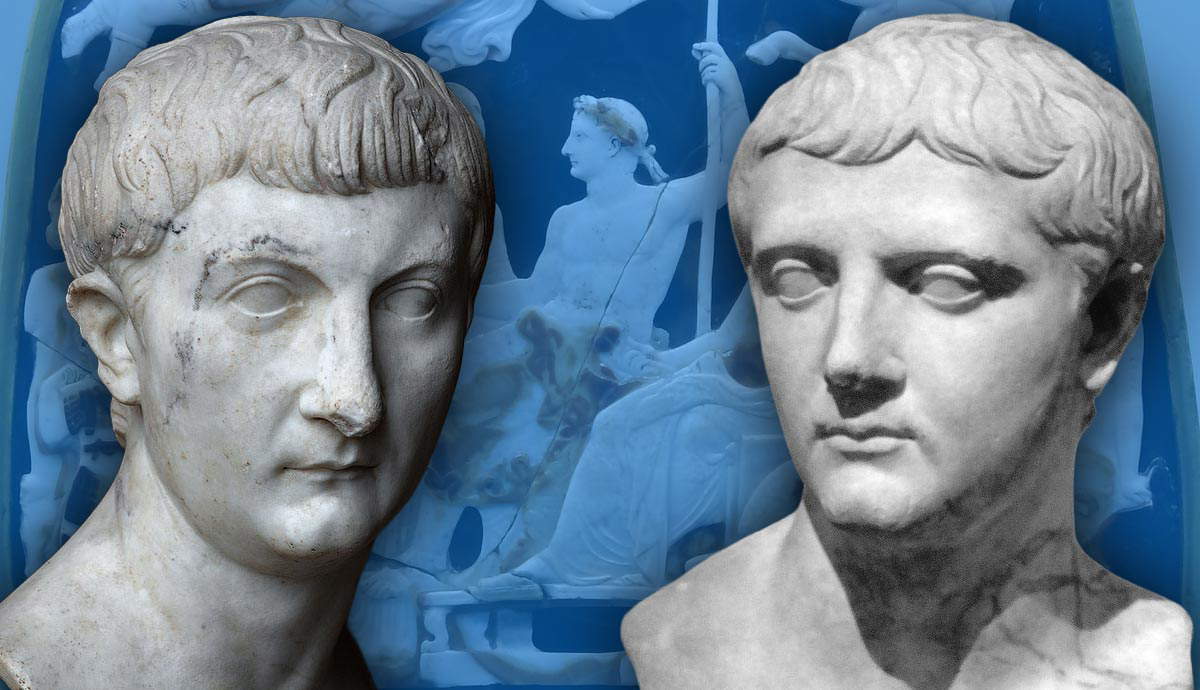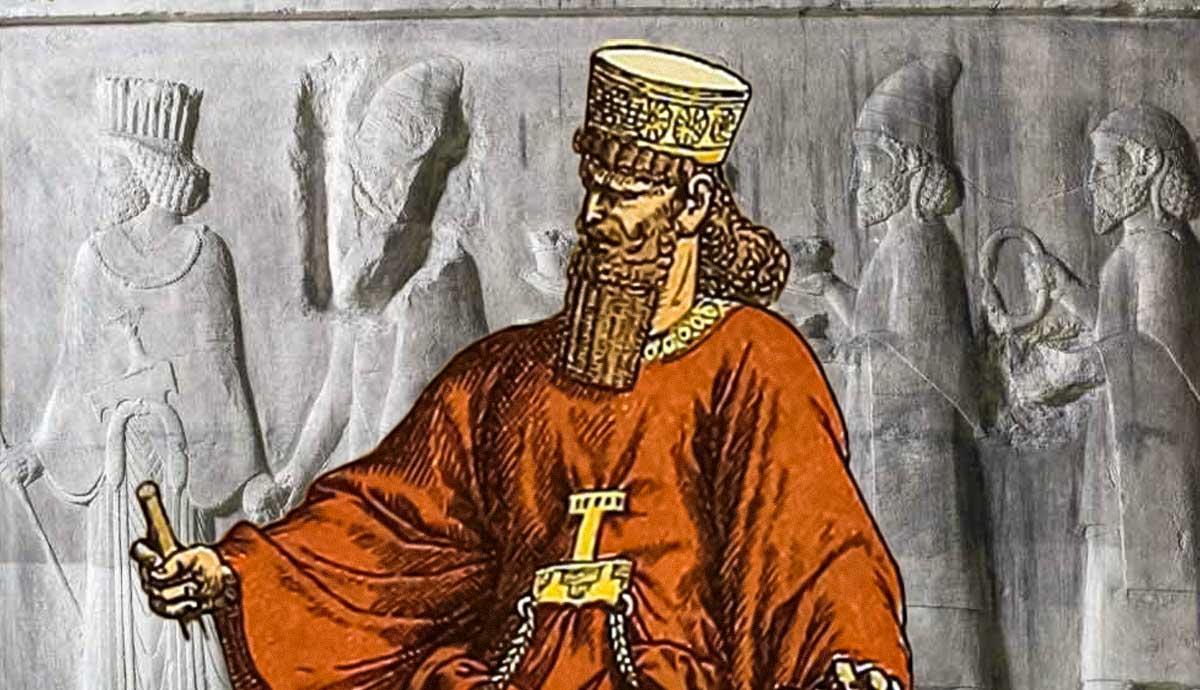
When the Romans ousted their kings and established the Republic, they established checks and balances to ensure that no one man could gain too much power. This system of regulation included the Cursus Honorum, which was the acceptable order in which Roman public offices should be held. It started with military service and the position of Quaestor and culminated with the Consulship, which was a gateway to other important positions in the Roman administration.
An Evolving Political Ladder

The Cursus Honorum evolved throughout the Republic, with the nature of the positions and the number of vacancies available each year adapting to the changing demands of administering an expanding empire.
The republican politician Sulla, while holding the position of dictator in 82-80 BCE, significantly reformed the Cursus Honorum, especially in terms of the minimum age requirement for each position and the required duration between offices. It is also significant to note that while the rules existed, they were regularly broken.
The Cursus Honorum underwent further significant change under Augustus and his successors when the traditional magistracies lost their importance and power was concentrated in the hands of the imperial family and their allies. The Cursus Honorum was maintained as a framework for Romans to build a political career and a tool to find and train talent to assist in the imperial administration. It was also used to groom imperial princes and present them to the public as on the traditional path to power.
This article provides an overview of the Cursus Honorum, principally as it existed during the late Republic, with commentary on its changes over time.
Military Service

Before an ambitious young man could even start to climb the official ladder of offices, they had to gain some military experience. Young men who wished to get into politics were usually expected to serve for around ten years, probably culminating in being elected military tribune by the administrative assembly of Roman tribes.
Military tribunes assisted in the command and management of the legions. During the Republic, six military tribunes were appointed to each legion and command rotated between them, two at a time. After the Social War (91-87 BCE), when the army became more professional, the tribunes were replaced by professional legionary legates. Nevertheless, military service was still expected.
One of the most famous republican generals, Gaius Marius, spent much of his early military service in Numantia with the general Scipio Aemilianus, joining the legion as a trained fighter when he was just 23 years old, and going on to serve as military tribune. During the Imperial Period, Augustus sent his 18-year-old grandson Lucius Caesar to Gaul and Hispania to complete his military service, where the youth died.
Quaestor

The first official step on the Cursus Honorum was the position of quaestor. There were many different types of quaestors, and they served different functions over the centuries. They started at just two in number during the early Republic, and 20 quaestors were elected annually by the time of Sulla, who also made holding the position grant automatic membership of the Senate, an aristocratic and hereditary council within Roman politics. The quaestors were the first magistrates to take office, starting on December 5, while the majority of others took up office on January 1.
In general, a quaestor was a financial and administrative assistant position in Rome or one of the provinces. They were either assigned a specific duty, such as managing the grain supply or public treasury, or they were sent to assist a higher magistrate, such as a governor. Their administrative tasks varied from auditing financial records to assigning jury pools and managing military supplies. Provincial quaestors would sometimes find themselves in command of armies under the imperium of the superior governor. After their one-year elected term, a person might continue in the same duties as a pro-quaestor.
The quaestorship was always considered a junior position and a good training opportunity for young politicians. It officially became the first step on the political ladder at the start of the 2nd century BCE. Sulla’s reform made the minimum age for the position 30, which was lowered to 25 during the Imperial Period.
Sulla stood for the quaestorship in 108 BCE, at the age of 30, and was assigned to assist the consul, Gaius Marius. In this role, he served in the Jugurthine War against Numidia. As quaestor, Sulla was entrusted to organize cavalry forces in Italy, and he led them in capturing the Numidian king. The Senate delegated subsequent negotiations to Marius, who delegated the task to his quaestor, Sulla.
Tribune of the Plebs

Tribune of the plebs was an adjacent position to quaestor that could only be held by Romans of plebian (non-aristocratic) status. It was not officially on the Cursus Honorum, but the position could be held in place of the quaestorship.
From the 5th century BCE, ten tribunes of the plebs were elected annually, on December 10, as the leaders of the Public Assembly. They had the power to convene the assembly and propose laws before it. They also had the power to veto the acts of any other magistrate, including the consuls. They had the right to intercede on behalf of individual citizens against other magistrates in legal proceedings. Their role was largely to protect the interests of the plebians within the patrician-dominated political system.
The tribunes of the plebs were considered “sacrosanct,” because the whole plebian population pledged to protect them from assault. Anyone who did assault them could be killed without penalty.

One of the most famous tribunes of the plebs was Tiberius Gracchus. He used his veto to block all government actions in 133 BCE when the Senate attempted to block his agrarian reforms. He then proposed to stand for office again the following year to continue his reforms—illegally as he had to wait ten years before holding the same office. While his significant popular support helped him seize the Capitol and intimidate voters, his senatorial opponents accused him of having kingly aspirations. They stormed the Capitol and killed Tiberius and many of his supporters.
The power of the tribune of the plebs was diminished and restored several times throughout the Republic and the Senate tried to control revolutionaries like Gracchus. Nevertheless, the tribunes remained important and tribunicia potestas was one of the extraordinary powers granted to the patrician Julius Caesar in 48 BCE. Augustus was later granted the same in 23 BCE as part of the complex group of honors used to express his power. It became a standard power granted to all emperors, which they often shared with their designated successor.
Aedile

Aedile was also a non-compulsory rung on the ladder of Roman political offices. Nevertheless, it was greatly coveted since it gave holders the chance to increase their public profile and popularity, which would assist in future elections. Based in Rome, they were responsible for maintaining public buildings, holding public festivals, and overseeing the food and water supply, making them highly visible philanthropists.
Like all magistracies, the position changed over the centuries. At the start of the Republic, there were just two aediles, elected from among the plebians. According to Livy, in 367 BCE a law was passed adding an extra day to the Roman games, but the plebian aediles refused to bear the expense. The patricians agreed to take on the expense and two patrician aediles, known as curule aediles, were created. Under Augustus, most of their responsibilities were transferred to the praetors and the revived office of urban prefect, allowing the emperor to concentrate these very public functions in the hands of his supporters.
Julius Caesar served as aedile in 65 BCE and held elaborate games in honor of Jupiter that won him much popularity. He also restored public monuments associated with his family, as would have been common practice. Rather than considering this self-aggrandizement, the Romans considered this a sign of virtus and pietas.
Praetor

The praetorship was the final required position to unlock the consulship in ancient Rome. A man had to be 39 to hold a position in the Republic following the reforms of Sulla, and the age was lowered to 30 under Augustus.
In the early Republic, the praetorship was the highest office, as the Roman historian Festus specifically says that the ancient praetors are now called consuls. When the consulship was properly established, the praetorship became an auxiliary position that took on some of the burdens of the consuls.
Specifically, in the absence of the consuls, the praetors could command the garrison in Rome and the legions in Italy. In the later Republic they also often held military power in the provinces. The praetors also took on much of the consul’s judicial responsibilities for civil and criminal trials. In different circumstances, they could appoint judges and juries or hear a case themselves.
The praetorship was a powerful office with its own imperium, and the only real check on their power was the veto of the consuls and tribunes. After serving as praetor, a man could be called on to fulfill similar roles as pro-praetors, holding pro-praetorial imperium.
Cicero served as praetor in 66 BCE, after a hotly contested election the previous year that saw an unusually large number of candidates competing for the eight spots open that year. The elections had to be held three times, and Cicero was reportedly elected in first place each time. It was during his time as praetor that Cicero gave his first important political speech, in support of the Manilian Law that gave Pompey supreme command of the war against Mithridates. Cicero later served as pro-praetor in the province of Asia from 61-59 BCE.
Consul

The most coveted political office of the Cursus Honorum was the consulship, the top political office in Rome designed to absorb the power and responsibility of the old Roman kings. But there were always two consuls, so that no one man could gain too much power, and they were only elected for a year at a time.
The consuls had vast administrative, legislative, and judicial powers. They had the power to call meetings of the Senate and act as its presidents, they could pass their own laws, and realize laws passed by the Senate. They held imperium to command Rome’s armies anywhere in the empire and were deployed to deal with threats.
We know the names of many Roman consuls because they gave their names to the years for dating purposes. This means that their names survive on monumental inscriptions and in historical texts. Many inscriptions include passages such as “C(aio) Minicio Fundano et C(aio) Vettennio Severo co(n)s(ulibus)” [When Gaius Minicius Fundatus and Gaius Vettennius Severus were Consuls].

If a consul died in office, he was replaced. That replacement consul was called a suffect consul, and it was a less prestigious position because their name was not given to the year. During the Imperial Period, as the imperial administration required more qualified men, it became standard practice to elect consuls for just the first six months of the year and then replace them with suffect consuls.
During the Republic, the minimum age to hold the consulship was 42 years old. This was reduced to 32 years during the empire. There was also supposed to be a ten-year break between holding consulships, though this rule was often ignored. Gaius Marius held five of his seven consulships consecutively between 104 and 100 BCE. The rules on age were also often ignored, especially during the Imperial Period. Gaius Caesar, Augustus’s grandson, was Consul in 1 CE at the age of just 20.
The Roman emperors were granted imperium maius, which let them command the Roman military without holding the consulship or any other office. Nevertheless, the imperial family still regularly held the consulship as it continued to be an important symbol within Roman politics.
Superior Positions

The consulship can be considered the top rung on the Cursus Honorum that most Roman politicians strove to reach. It was also an important gateway office to other important positions within the Roman administration that could only be held by ex-consuls with pro-consular imperium.
Governor

Chief among these superior positions were the governorships of the provinces. These were usually held by ex-consuls but were sometimes held by ex-praetors. The governor was more or less in complete control of their province, usually for a period of one to five years. They were in charge of the local legions and military actions, acted as chief judges and lawmakers, and were the principal administrative power, including tasks such as tax collection, which was an opportunity to enrich themselves. The governor was assisted in his administration by a quaestor and various comites, which just means “companions” in Latin.
During the Republic, provincial appointments were made by council or lot, while during the Imperial Period, the emperor was responsible for most appointments. Under the emperors, some provinces were considered “senatorial,” and ostensibly under senatorial control, and others were considered “Imperial.” The emperor theoretically had direct control of these provinces, but in reality, appointed legates to rule on his behalf, usually chosen from among the ex-consuls.
Governorships of volatile provinces offered opportunities to militarily ambitious politicians. Julius Caesar was made governor of Cisalpine Gaul from 58-54 BCE, which gave him the opportunity to conquer the rest of Gaul and invade Britain. This established his reputation as a general, allowed him to build personal loyalty among his troops, and helped Caesar enrich himself. Governors were also often accused of corruption. We know about Gaius Verres, the Governor of Sicily from 73-71 BCE, because Cicero prosecuted him for misconduct while governor. He accuses him of extorting farmers and plundering temples.
Censor

The position of censor was also only open to ex-consuls and is sometimes considered the last rung on the Cursus Honorum. They were appointed to conduct the census of the Roman population, reorganize the voting tribes, review membership of the Senate—ousting unworthy members and admitting new members—and oversee public morals. They were elected every five years, though by the late Republic, they usually held the position for just 18 months. As with most Roman magistracies, initially, only patricians could be censors, but this rule was relaxed.
The last traditional censors were appointed in 22 BCE, under Augustus. After this time, the emperor conducted the census, sometimes using the title censor, and sometimes adopting a colleague. Nevertheless, from the age of Augustus, it was no longer seen as a regularly attainable position on the Roman political career ladder.
Dictator to Princeps

While the Cursus Honorum still existed during the Imperial Period and was pursued by aristocratic families, it fundamentally changed when Caesar was made dictator in 44 BCE. Dictator was a legitimate office in the Roman Republic, appointed by the Senate in times of emergency. One man was given absolute power to deal with a crisis, appointed for six months at a time. He could not be prosecuted for his actions after the fact. A Magister Equitum, or Master of the Horse, was appointed as his second in command, and one of them always had to be in Rome.
There are several examples of dictators in Roman history who served during times of crisis. Lucius Quinctius Cincinnatus, considered a model of Roman virtus, served in 458 and 439 BCE in response to invasions by neighboring Italian tribes. Quintus Fabius Maximus Verrucosus served in 221 and 217 BCE during the Second Punic War, he was also consul five times and served as censor in 230 BCE. Sulla served as dictator from 82-80 BCE. He used the position to make reforms, including to the Cursus Honroum, and ruthlessly proscribe his enemies.
Of course, the most famous dictator in Roman history was Julius Caesar, who received the position multiple times between 48 and 44 BCE, eventually being named dictator perpetuo in 44 BCE. Mark Antony served as his Master of the Horse. This was clearly an attempt to rationalize Caesar’s absolute powers within the existing nomenclature and offices of the Republic. It also clearly failed, with Caesar accused of trying to make himself a king and assassinated in 44 BCE.

The title of dictator was not used again after the death of Caesar. Augustus developed a much more elaborate, but eventually more effective and enduring, way to formulate his power within the vocabulary of Roman Republican tradition. He was given pro-consular imperium and then imperium maius to command Rome’s army anywhere in the empire and overrule any of Rome’s governors. He was given tribunicia potestas which made him sacrosanct and gave him the power to propose laws and the right to veto. He later took censoria potestas to conduct the census. But all this relied on his personal auctoritas.










